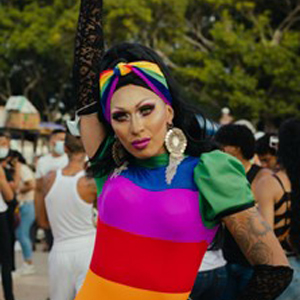
Unleash a new perspective on cross dressing as we delve deep into the hidden statistics that defy stereotypes and challenge societal norms. In this eye-opening article, we go beyond the surface perception to explore the multifaceted world of cross dressing, shedding light on the intriguing facts that often go unnoticed. While many may view cross dressing as a mere form of self-expression or a fashion statement, the underlying statistics paint a much more complex picture. By breaking free from preconceived notions and understanding the true extent of cross dressing, we aim to foster empathy and acceptance for those who choose to defy gender conventions. Join us as we challenge commonly held assumptions and embark on a journey of discovery, where perception meets reality and stereotypes are shattered.
What is the history behind crossdressing?
Cross dressing is not a modern phenomenon but has deep historical roots. Throughout history, individuals have challenged traditional gender roles by adopting clothing and styles typically associated with the opposite sex. From ancient civilizations to medieval times and beyond, cross dressing has been observed in various cultures and societies. In ancient Rome, for example, cross dressing was a common practice during festivals and theatrical performances. Men would dress as women and vice versa, blurring the lines of gender expectations. Similarly, in feudal Japan, the tradition of onnagata saw male actors taking on female roles, donning elaborate costumes and makeup to portray women in traditional Kabuki theater. These historical examples demonstrate that cross dressing has long been present in different societies, often serving as a means of artistic expression or cultural celebration. By understanding the historical context, we can appreciate how cross dressing has evolved and continues to play a role in shaping gender norms and perceptions.
Taboos and Stereotypes Surrounding Cross Dressing
Cross dressing has long been stigmatized and subjected to societal taboos. The association of cross dressing with deviance or immorality has led to widespread misunderstanding and prejudice. Stereotypes often portray cross dressers as confused or abnormal, perpetuating harmful misconceptions.One common stereotype is that cross dressing is synonymous with being transgender or gay. While there may be overlap between these identities, it is essential to recognize that cross dressing is a distinct phenomenon. Cross dressers may identify as cisgender individuals, meaning their gender identity aligns with the sex they were assigned at birth.
Another stereotype is that cross dressing is a form of deception or disguise. This misconception fails to acknowledge that many cross dressers are open about their identity and going out dressed is a means of self-expression. It is important to respect their choices and not make assumptions based on appearance alone. By challenging these taboos and stereotypes, we can create a more inclusive and accepting society. It is crucial to educate ourselves and others about the diverse experiences and motivations of cross dressers, fostering empathy and breaking down barriers.
So, how common is crossdressing?
Data suggests that crossdressing is more common than many people first realise. While not everyone in this study will identify as a crossdresser, our poll of 2,000 men for Glamour Boutique found that 41% of males at least regularly include items of clothing designed for women into their wardrobes.
Why do men crossdress?
The results of the survey also challenge common misconceptions about motivations for crossdressing. According to the data just 14% of respondents said that their reason for crossdressing was tied to their gender identity, while 13% said it was related to identifying as either gay or bisexual. More commonly, people said that their reasons for crossdressing were related to simply liking crossdresser clothing (18%), sexual arousal (17%), because crossdressing made they feel empowered (15%), or because they enjoy doing drag (15%).
Methodology in Obtaining Accurate Statistics
Obtaining accurate statistics on cross dressing can be challenging due to the secretive nature of the practice and the fear of discrimination or judgment. However, researchers have employed various methodologies to gather data and shed light on the prevalence and demographics of cross dressers. One approach is through surveys and questionnaires. By designing surveys that guarantee anonymity and confidentiality, researchers can encourage individuals to share their experiences and identify as cross dressers. These surveys can provide valuable insights into the demographics, motivations, and experiences of cross dressers.
Another method is through interviews and qualitative research. By engaging in personal conversations with cross dressers, researchers can gain a deeper understanding of their experiences, challenges, and aspirations. These qualitative studies allow for a more nuanced exploration of the psychological and social aspects of cross dressing. It is important to consider the limitations of these methodologies. Self-reporting surveys and interviews may not capture the full spectrum of cross dressers, as some individuals may be reluctant to disclose their identities. Additionally, cultural and societal factors can influence the willingness of individuals to participate in research on cross dressing.
Conclusion
By going beyond the surface perception and unraveling the hidden statistics of cross dressing, we can embrace diversity and challenge societal norms. Let us foster empathy and acceptance for those who choose to defy gender conventions, as we embark on a journey of discovery where perception meets reality and stereotypes are shattered.
Do you crossdress? What do you think about the statistics we found? We’d love to know what you think! Email us atglambmarketing@gmail.com or message us on our Facebook page. And be sure to check out more great tips and articles on our blog!
